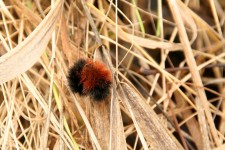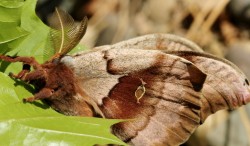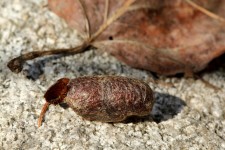Finding one caterpillar on a hike is exciting but finding 13 caterpillars is extremely exciting–especially for kids.
In early May, the kids and I went on a hike with friends. We stopped to explore a meadow by a creek in southern Boundary County. One of the kids pointed out a caterpillar on a bush (we narrowed it down to some type of spirea). Of course, all the kids wanted a caterpillar to hold so we started looking.
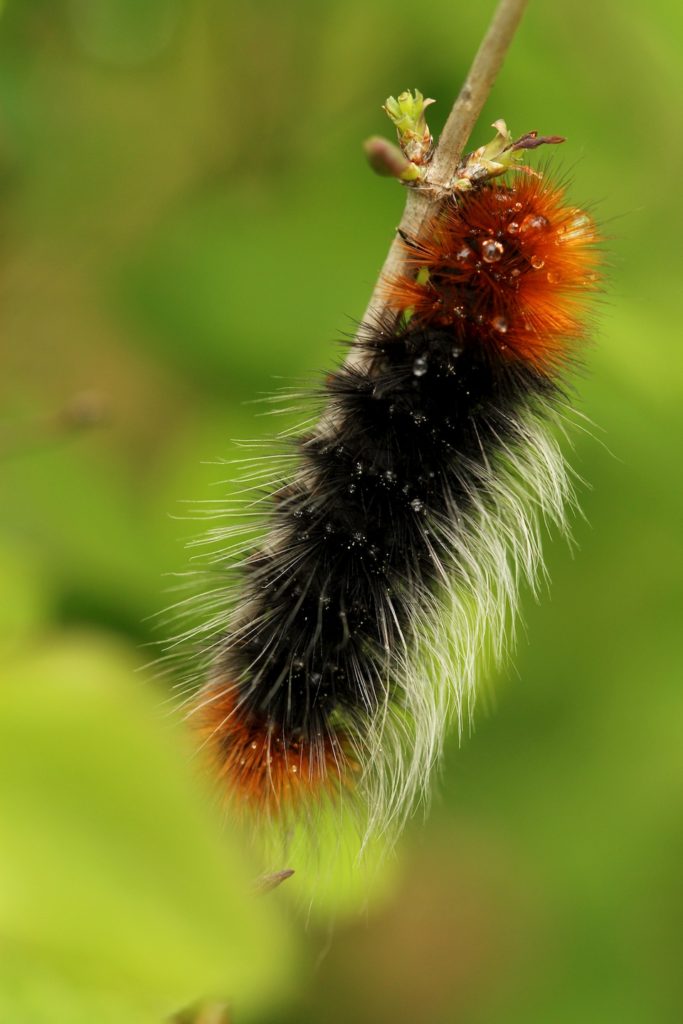
Here’s one! There’s one. Here’s another…and another. Two over here! After scouring all the spirea bushes in the area (which seemed to be what they preferred), we found 13 caterpillars–enough for all kids to hold at least two. The kids were ecstatic!
These caterpillars were ones we hadn’t seen before. While they did have black and orange hair like a woolly bear caterpillar, it wasn’t in the correct pattern and these had super long white hairs.
After quite a bit of searching the internet at home, we determined they were Ranchman’s tiger moth caterpillars. These caterpillars prefer wet meadows and riparian zones–which is where we found them. They also experience local population explosions–we witnessed that too. I’ve never found that many caterpillars in a single area at once (excluding tent caterpillars).

The four caterpillars went into two mason jars and the wait began. However, these caterpillars were voracious eaters! They required a handful of leaves everyday, sometimes twice a day. Ranchman’s tiger moth caterpillars are generalists so they eat many different kinds of leaves.
Then one day at the end of May they climbed to the top of the jar and began making a net of silk and then making themselves a cocoon. After about three weeks they hatched! As with most tiger moths, they were brightly colored with bold markings. Not many animals have both spots and stripes.
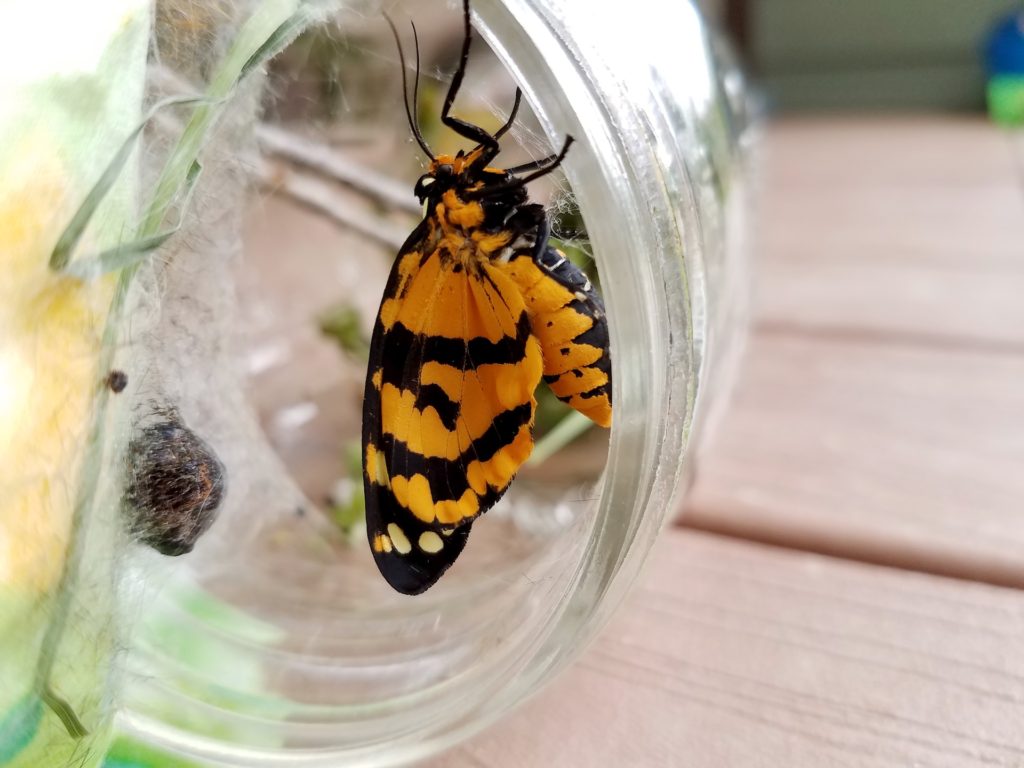
After letting them go, we did see one in the garden a few hours later. Ranchman’s tiger moths are day-flying moths (moths can be active day or night) and are found sporadically throughout low elevations in western North America.

As an interesting side note, scientists have changed the classification of Ranchman’s tiger moths. They still belong to Kingdom Animalia, Phylum Mandibulata (Insects, Springtails and Millipedes), Class Insecta (Insects), and Order Lepidoptera (Butterflies and Moths).
However, they were previously classified in the Family Arctiidae (Tiger Moths) but are now classified in Family Erebidae as of 2016 by Ronka et al. The traditional Arctiidae family has been transferred to the family Erebidae as a subfamily (Arctiinae). The scientific name has changed from Platyprepia virginalis to Arctia virginalis.
The classification change doesn’t matter to young kids, but it is helpful for identification and figuring out what they eat.
The kids were very thrilled to find so many caterpillars and to be able to see the process of metamorphosis from caterpillar to moth in a short period of time. Witnessing the first flight of a moth is amazing!


